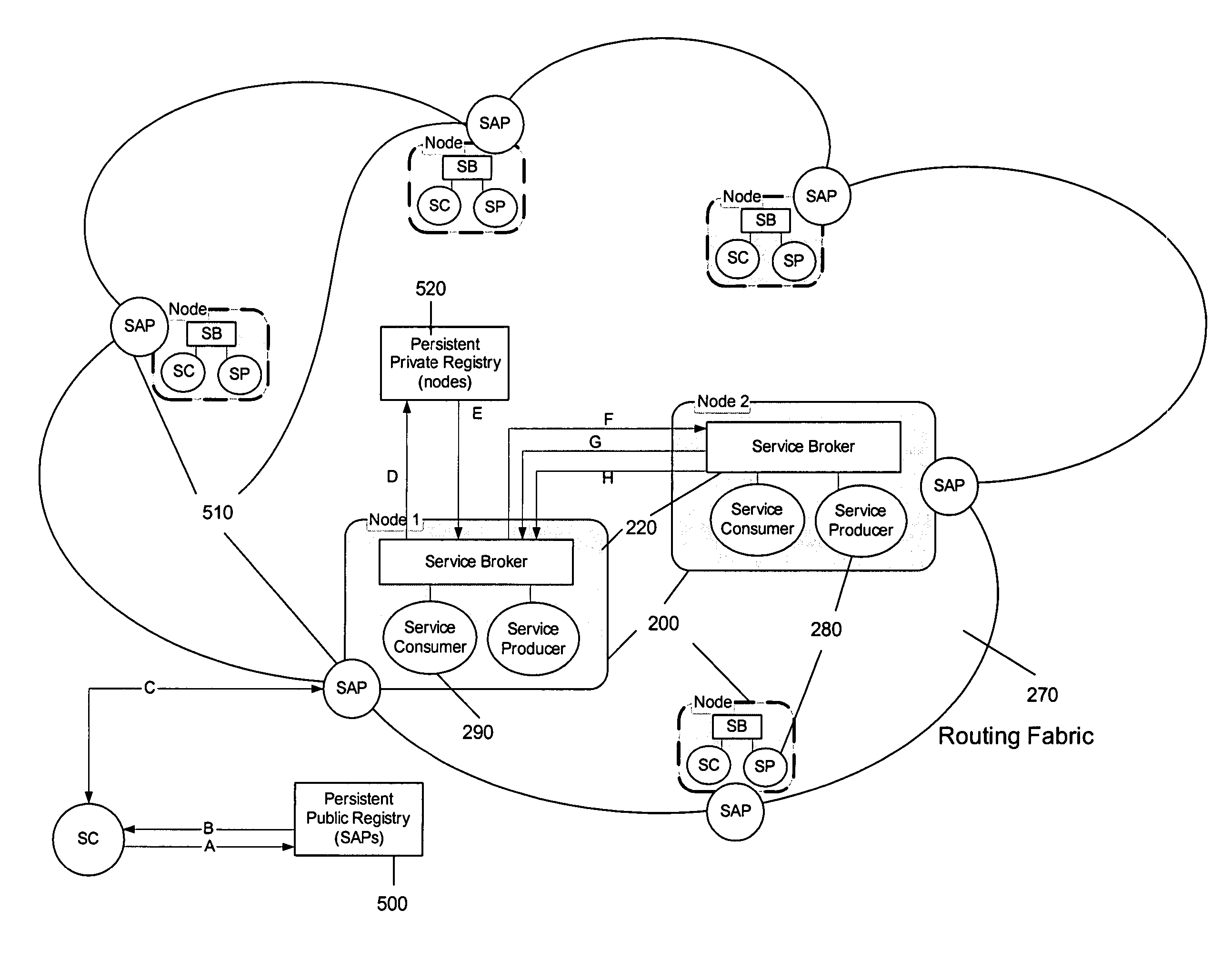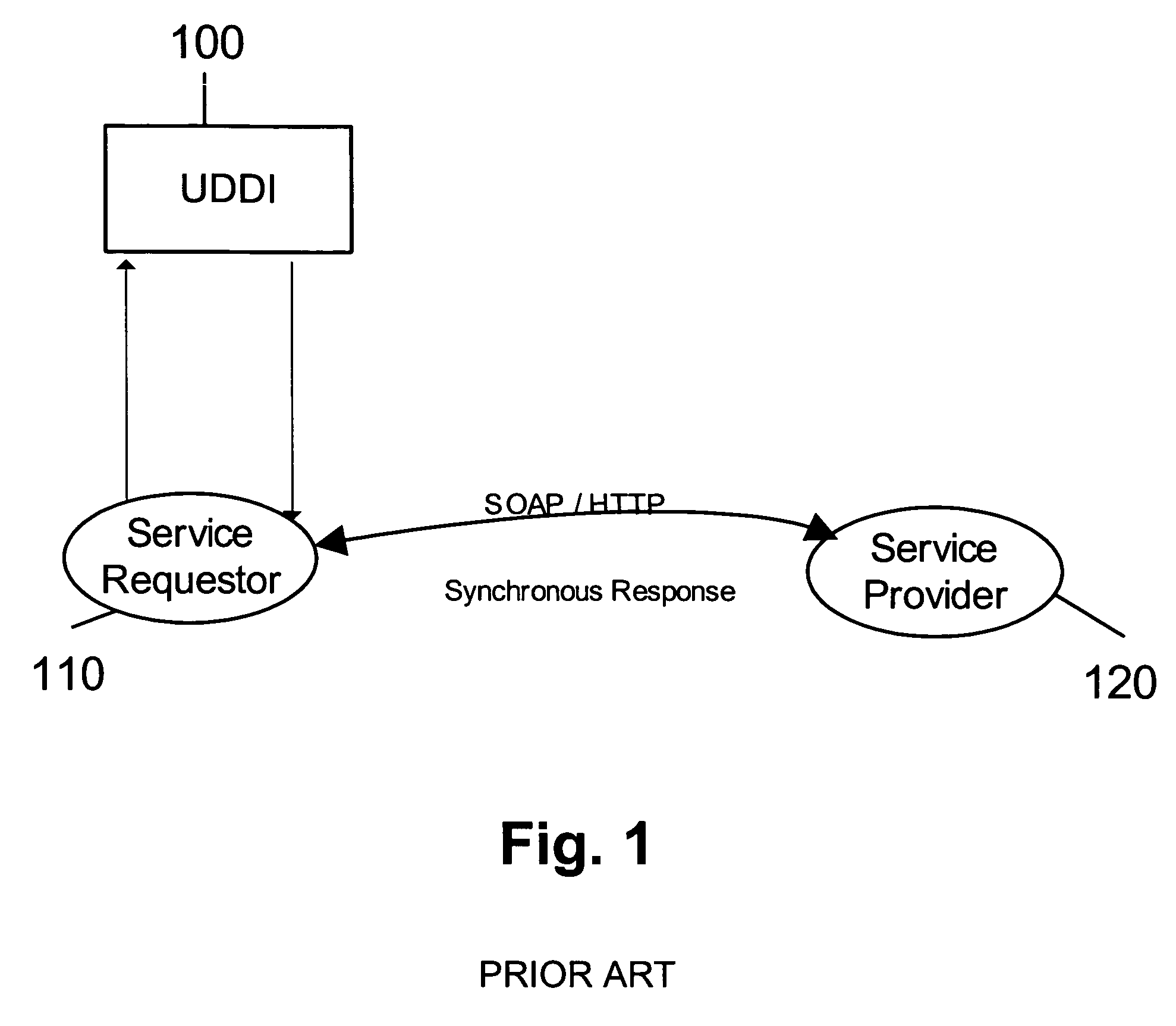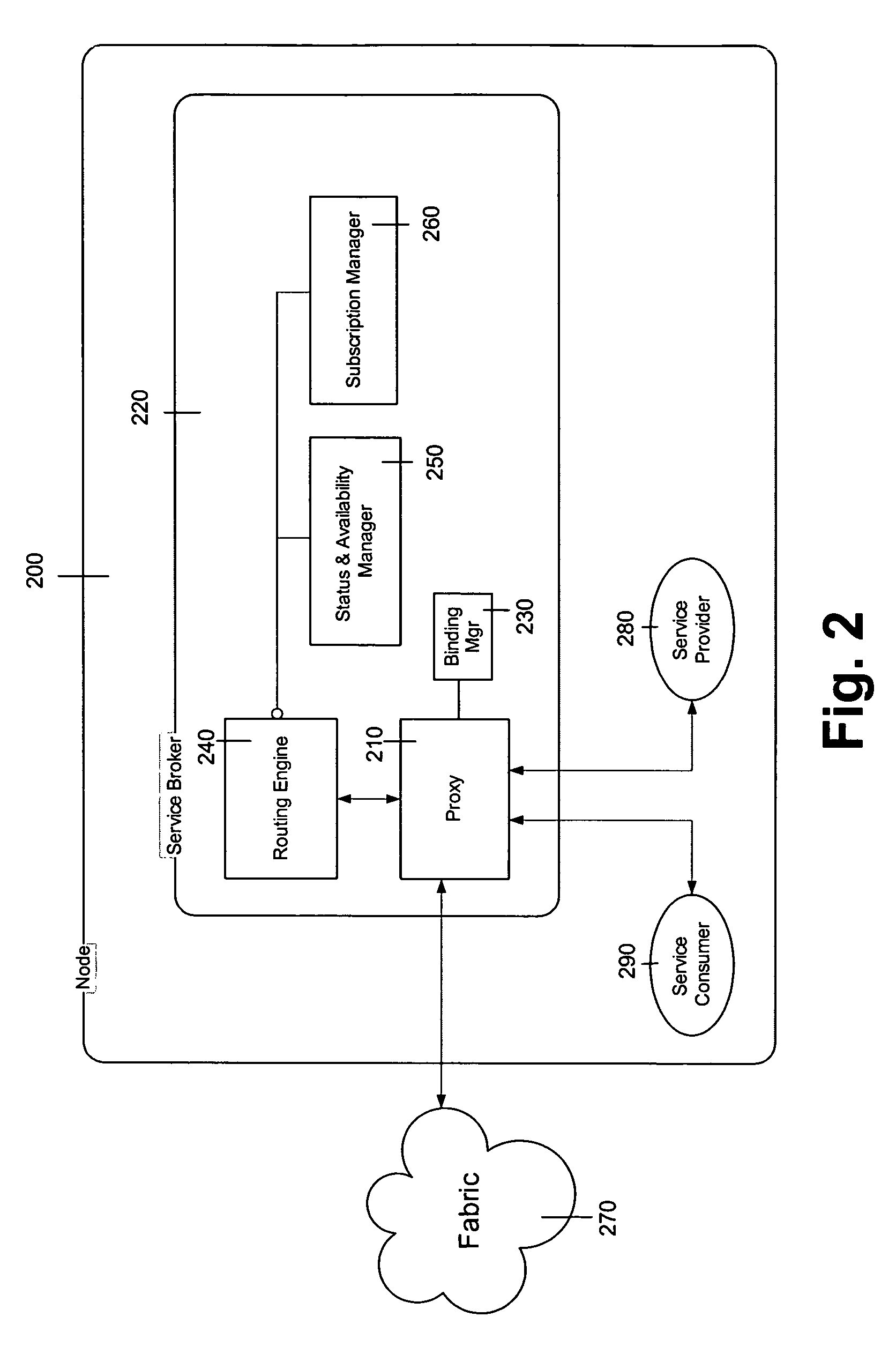Method and apparatus to accomplish peer-to-peer application data routing between service consumers and service providers within a service oriented architecture
a service-oriented architecture and application data technology, applied in the field of data routing among distributed networks over the internet, to achieve the effect of facilitating deployment and enhancing web services brokering
- Summary
- Abstract
- Description
- Claims
- Application Information
AI Technical Summary
Benefits of technology
Problems solved by technology
Method used
Image
Examples
Embodiment Construction
[0071]The system and methods of the present invention extend the concept of service oriented architecture to include mechanisms for transient status and availability management, dynamic application data routing to support distributed fault tolerance and load balancing, and invocation protocol independence.
[0072]The system and methods of the present invention comprise a multi-protocol Service Broker and distributed routing fabric which comprise the following major components, interaction types, and capabilities:
[0073]Components:[0074]Public Persistent Registry[0075]Private Persistent Registry[0076]Proxy[0077]Binding Manager[0078]Routing Engine[0079]Service Status and Availability Manager[0080]Service Status Subscription Manager[0081]Multi-Protocol Peer-to-Peer Application Data Routing Fabric[0082]Fabric Connector
[0083]Component Interactions[0084]Transient Service Registration[0085]Service Access Point Discovery[0086]Service Instance Discovery[0087]Service Invocation[0088]Provisional ...
PUM
 Login to View More
Login to View More Abstract
Description
Claims
Application Information
 Login to View More
Login to View More - R&D
- Intellectual Property
- Life Sciences
- Materials
- Tech Scout
- Unparalleled Data Quality
- Higher Quality Content
- 60% Fewer Hallucinations
Browse by: Latest US Patents, China's latest patents, Technical Efficacy Thesaurus, Application Domain, Technology Topic, Popular Technical Reports.
© 2025 PatSnap. All rights reserved.Legal|Privacy policy|Modern Slavery Act Transparency Statement|Sitemap|About US| Contact US: help@patsnap.com



